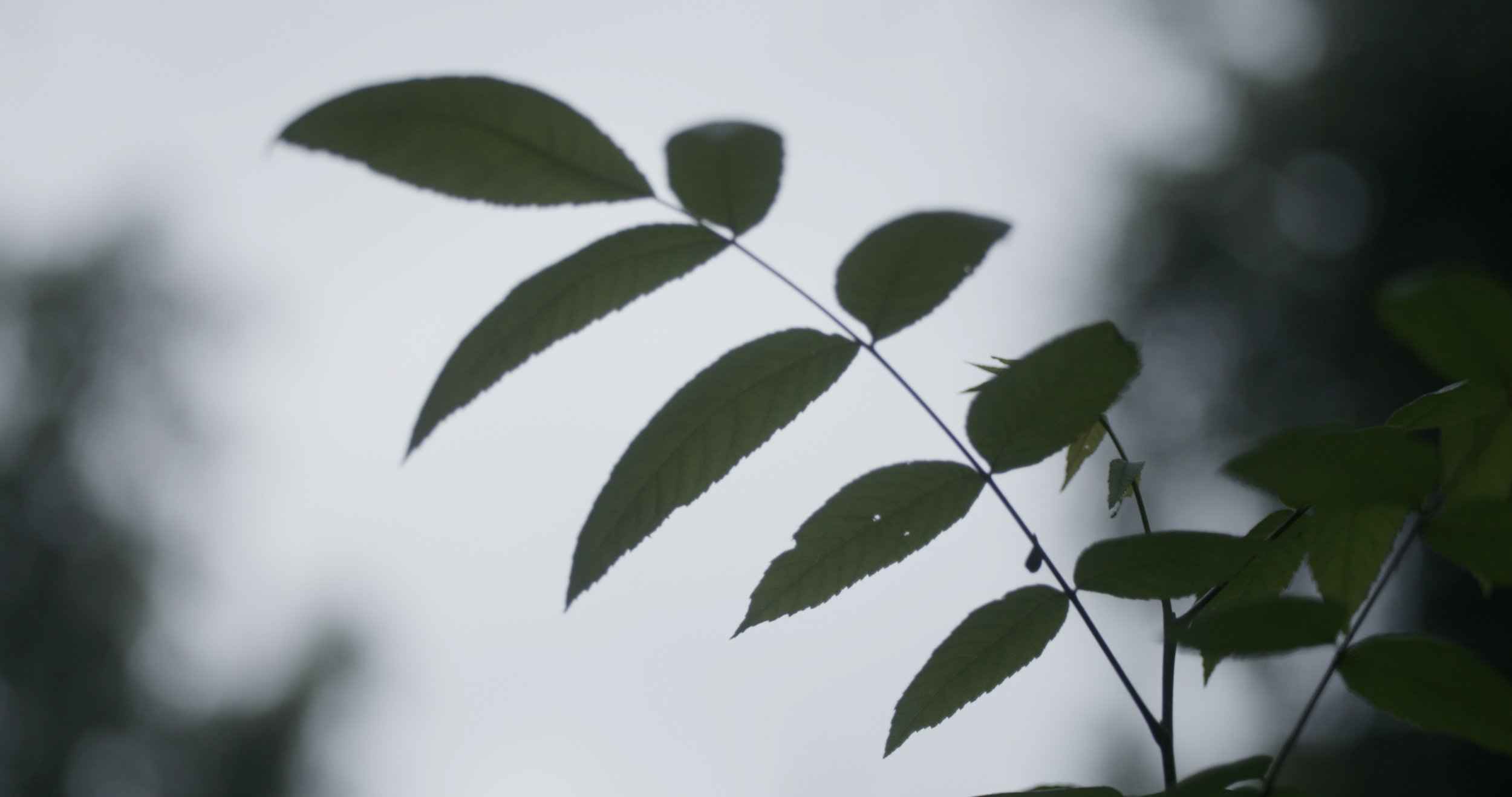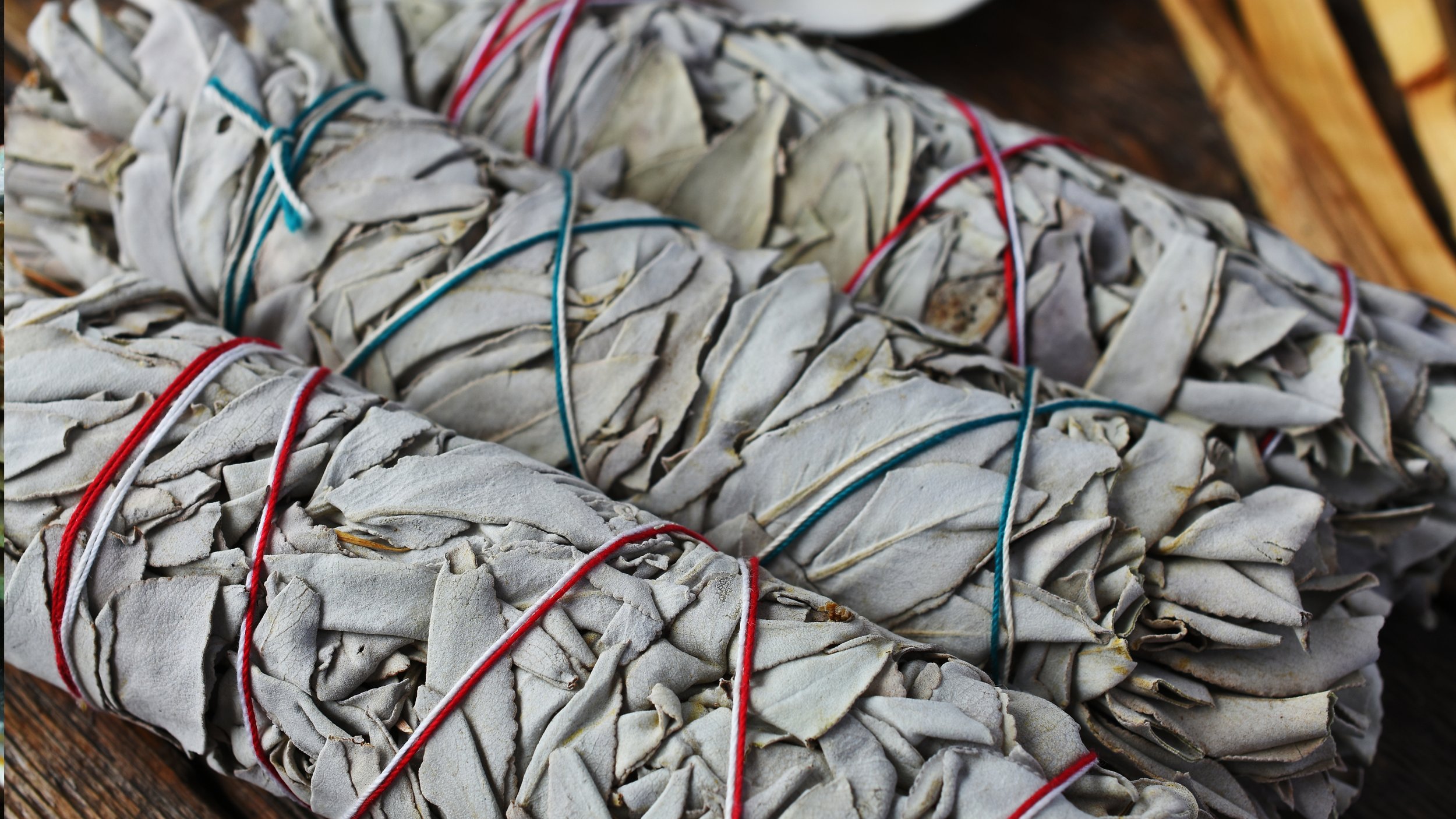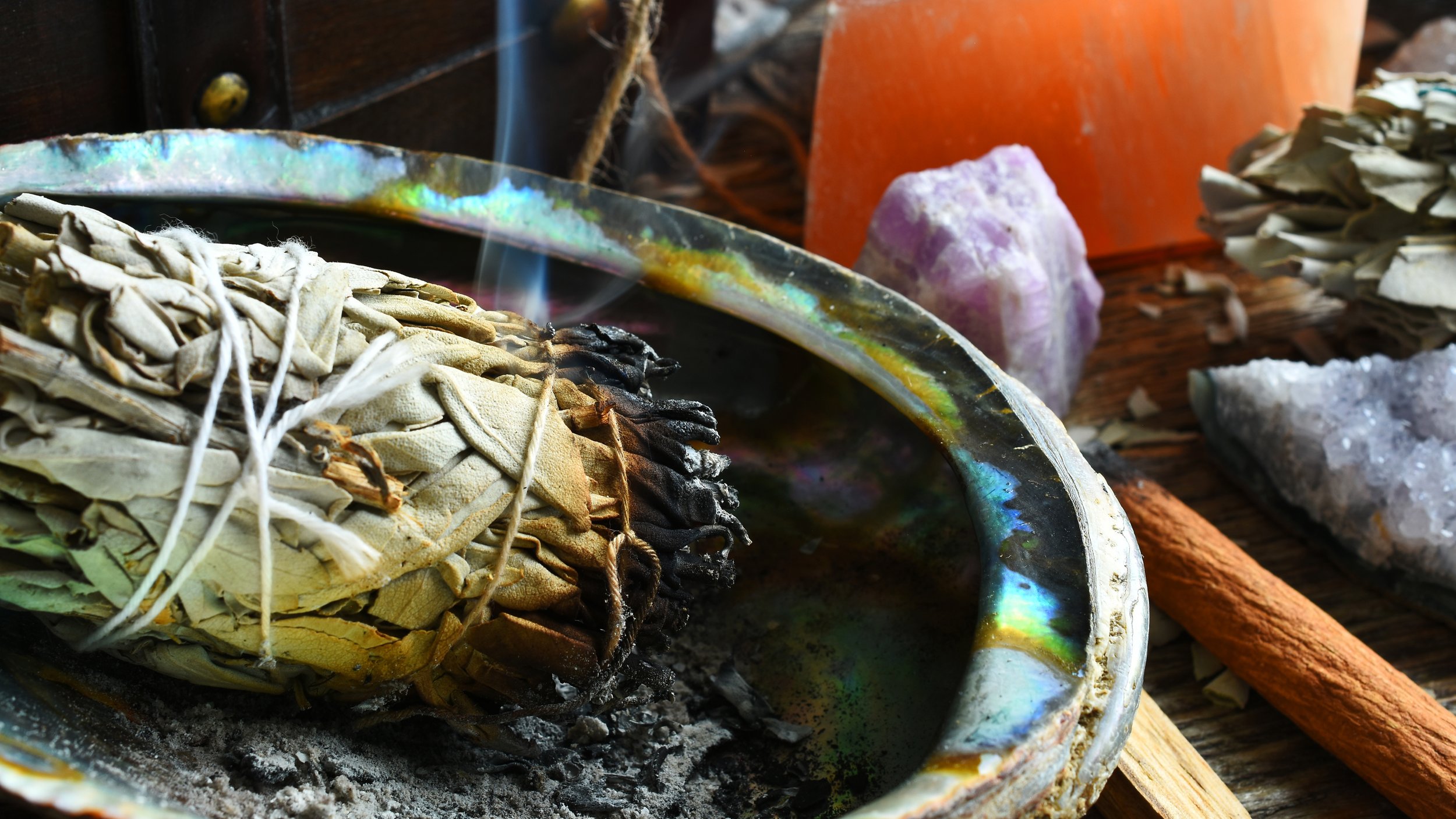
Protect
White Sage

Want to be an ally?
❌
STOP BUYING POACHED SAGE
❌
Want to be an ally? ❌ STOP BUYING POACHED SAGE ❌
White sage is unsustainably poached from traditional gathering grounds every year. It not only devastates the Southern California environment but also the indigenous community. This Page is dedicated to raise awareness of the threats our plant relative faces and to offer ways to help Protect White Sage.
White Sage is Being Stolen from National Parks and Ancestral Gathering Grounds
If you ever bought a smudge stick, did you ask the vendor where it came from? Most people don’t, including those in Indigenous communities. Unfortunately, in the past few years, it has come to our attention how white sage is often taken from our land and the land of our Southern California Native neighbors. White sage smudge sticks and products, unless otherwise labeled as “farmed” are often poached from wildlife reserves in Southern California. Scroll down to see how you can be an ally and how poached white sage harms the environment, the Indigenous people of the American Continent, and the body.
A handful of the 300lbs returned to a local Tongva family in 2021. Some of the white sage had fermented in the heat of the densely packed duffle bag that was confiscated.
Why Poached Sage is NEVER a good choice
-
Coyotes (a smuggler typically of South American origin) are often used to poach sage. When they’re caught, they’re taken to prison, deported, or fined upwards of $3,000. The middleman who will profit from the sage has no accountability. Poaching white sage harms our Indigenous neighbors from South America.
-
Because white sage can make a good profit, when white sage is poached, the whole plant is taken, often killing the sage plant. The health of the plant and the season are rarely taken into account, reducing the survival of the sage further.
-
The stress and harm done to grandmother white sage when she is poached is so stressful to the plant that it can no longer give blessing. Ethical gathering should only be done to a sage plant that has been loved and tended to, and should NEVER kill the plant. Sage poaching does both of these things.
-
Indigenous Southern Californian tribes are no longer allowed to gather our own sage from Mother Earth if we don’t have land to grow our own. Poached sage is brought to us, mangled and fermenting, after it has been confiscated by park rangers. It is heartbreaking. Our grandmother white sage and our mutualistic relationship with her is disappearing because of the thousands of pounds poached every year to meet the demand that overlooks our own.
-
When Coyotes poach sage, they stuff duffel bags as compactly as possible to reduce the number of trips into the wildlife areas they’re poaching from. The sage plant stays crammed in a duffel back with very little ventilation, in the California heat, for hours or days before it is bundled by other migrant workers (who are also exploited). This sage begins to ferment and mold almost immediately, reducing the quality and medicinal benefits substantially.
-
Although we understand white sage has become an integral part of meditation, the use of an abalone shell and/or a bird feather is cultural appropriation to our ceremonial practices. This is a continuation of the harm of colonization and Indigenous erasure.

The best way to help is really simple.
All you have to do is…
GROW IT YOURSELF
◆◆◆◆
The best way to help is really simple. All you have to do is… GROW IT YOURSELF ◆◆◆◆
GROW IT YOURSELF!
You can find sage plants in Southern California at your local Botanic Garden and native plant nurseries
You can buy seeds online, and germinate them using our growing guide or the additional resources we have linked below.
If you have sage you think is poached crumble it and return it to Mother Earth, bonus points if you do it somewhere you really love, like your garden or favorite fruit tree
If you’re a business that has poached sage, it’s not too late! Put up a sign for final sale of white sage due to climate and poaching issues. If you can afford to, consider giving away the rest of the sage in your possession to your community.
White sage plants grow largest outside in direct sunlight. If you’re growing a healthy sage plant, that means you can grow a healthy sage practice by just drying what you trim every year before summer!
For the reason above, smudging is not a closed practice however, smudging with abalone shells and hawk feathers is. Enjoy the fruits of growing your friend white sage, but don’t appropriate ancestral practices.
You can help by sharing white sage with your friends and family. Let your community know you’re sharing the blessing.
Growing white sage helps native pollinators and ecosystems. Consider growing other native plants with your white sage for lots of hummingbirds to visit your yard!

Sage is a Gift, NOT a Purchase
We are not condemning the practice of smudging. We want you to help Southern California ecosystems by growing your own.
You can’t just buy a $5 magic wand and expect it to solve all your energy problems.
Whether you are White Sage for spiritual reasons or because you think it smells nice, you still contribute to the poaching of a living thing. Growing White Sage helps the land, creates relationship with a plant, brings pollinators to your yard, and it smells wonderful. When it’s small, it can easily be grown in a sunny windowsill or in a pot on a patio. If you’re not in the Southern California or other desert area, consider growing sacred plants from your ancestry or the ancestry of the land you live on!

Don’t appropriate a culture that is not yours.
Don’t appropriate a culture that is not yours.
Don’t appropriate a culture that is not yours.
Don’t appropriate a culture that is not yours.
Don’t appropriate a culture that is not yours.
Don’t appropriate a culture that is not yours.
Don’t appropriate a culture that is not yours.
Don’t appropriate a culture that is not yours.
Don’t appropriate a culture that is not yours.
Don’t appropriate a culture that is not yours.
We understand that sage has become a popular way to cleanse spaces for non-Southern California Indigenous communities, but we ask you to please refrain from any other part of the practice unless you are actively involved in a tribe whose Native territory has white sage. Do not use abalone shells or bird feathers (especially hawk) in your smudging practice. If you are indigenous to other areas of America, we suggest researching your native tribe’s traditional smudging herb (such as sweetgrass) to receive stronger ancestor blessings and connections to your culture. Instead of shopping, grow your own or reach out to someone who grows sage.
The best way you can smudge with sage is if you build a relationship with the plant! If you live in or around Southern California (or equivalent climate), you can grow your own white sage. White Sage is a gift from mother earth and medicine that should be shared, but buying it is not the answer!
Planting White Sage in Southern California
Plant in late fall/early winter
Sprinkle the seeds onto soil with a little soil on top.
To stimulate seed growth, you can mist the top with liquid smoke or burn pine needles over the top of the soil.
Mist soil until damp every morning, seeds should sprout in 2-3 weeks
Keep the seedlings outside in direct sunlight, water every morning or when the soil is starting to look dry.
Place in the ground as soon as the stem is about the thickness of a pencil, or continue transferring to larger pots until you find a place you’d like to put your sage.
We recommend keeping only keeping your white sage in a pot for a maximum of 5 years before planting somewhere with lots of sun.
◆◆◆◆
White Sage Seed and Sprout Resources
◆◆◆◆
More info on White Sage

The Tongva Taraxat Paxaavxa Conservancy is committed to protecting our plant relative by spreading awareness about and planting white sage. Your donation directly helps our community by giving us funding to continue our work.
We are currently only accepting monetary donations online. If you have white sage bundles or fresh white sage, please give it away to your local community and spread the word about Protect White Sage!
The Tongva Taraxat Paxaavxa Conservancy is a registered 501(c)3 non-profit, EIN 87-1422866. All donations are tax deductible.
We request that large donations ($1,000+) be made via wire transfer or check, as the online platform takes a percentage of donations. Contact info@tongva.land for instructions.
If you’d like to send a check, please mail to: Tongva Taraxat Paxaavxa Conservancy Address: PO Box 608 Claremont, CA 91711.



